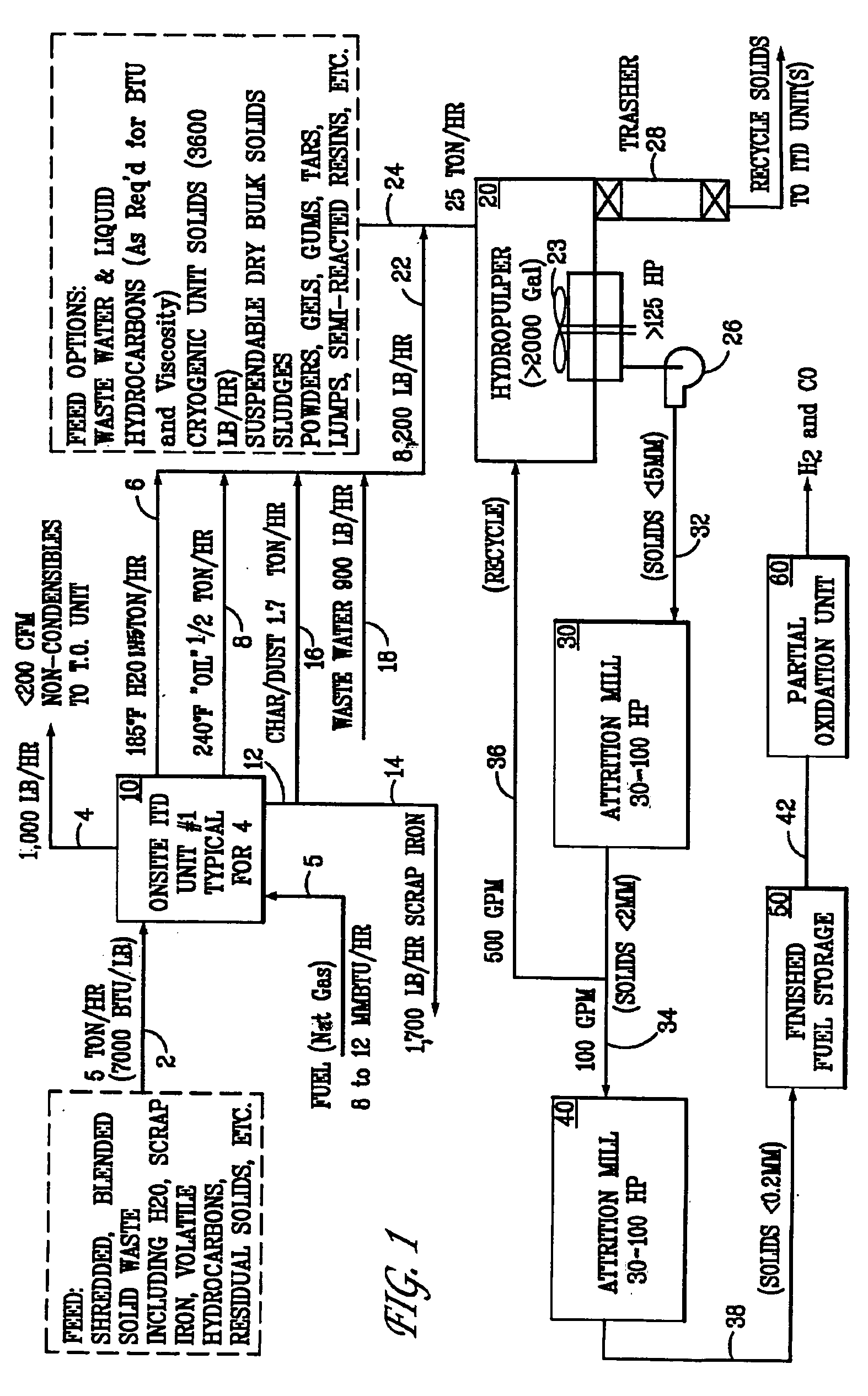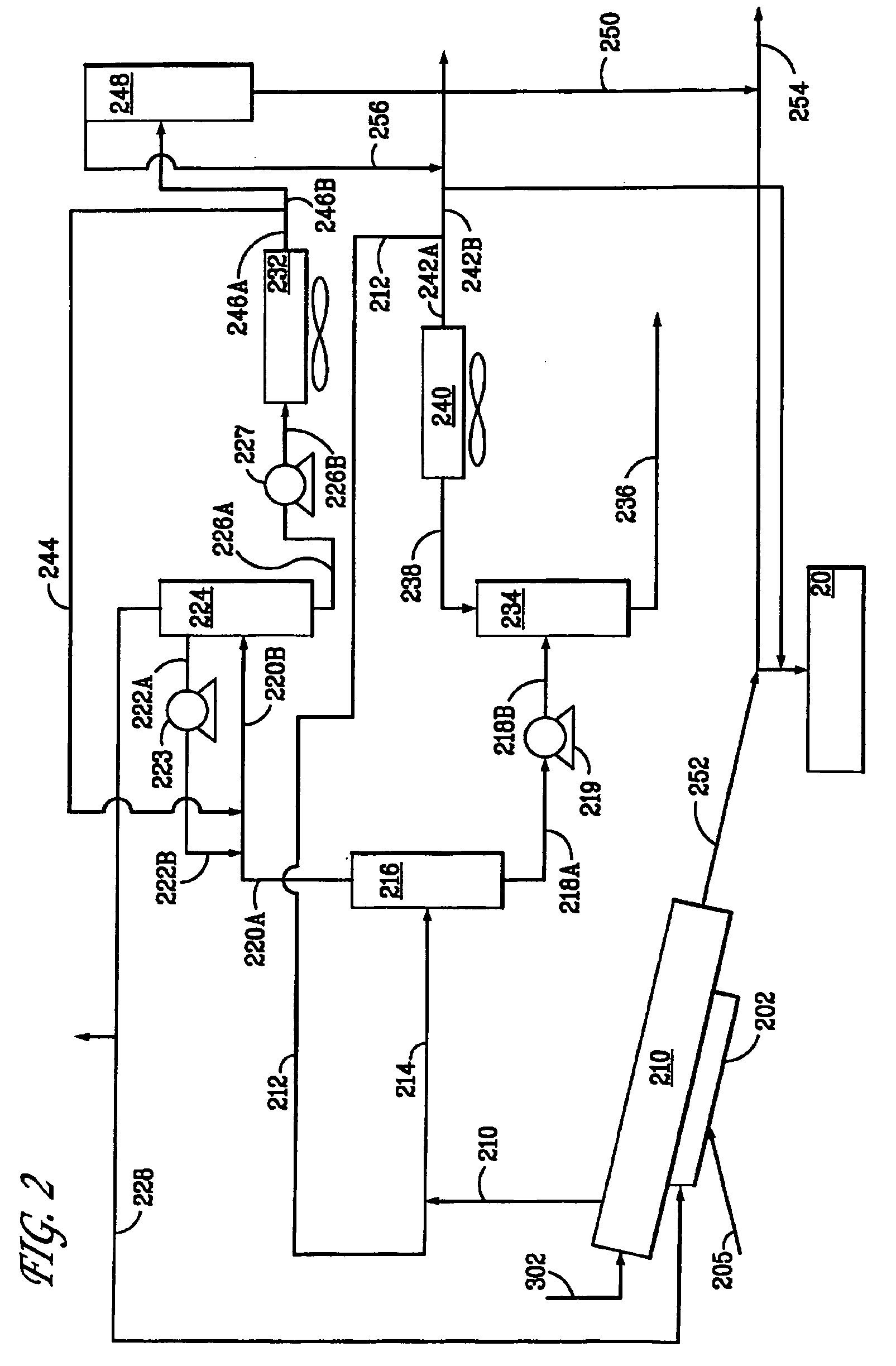Process for producing a liquid fuel composition
a liquid fuel composition and process technology, applied in the field of waste materials handling, can solve the problems of not recovering the combustible component of organic solid waste which has caloric value, and the problem of organic solid waste disposal becoming an increasingly severe problem
- Summary
- Abstract
- Description
- Claims
- Application Information
AI Technical Summary
Benefits of technology
Problems solved by technology
Method used
Image
Examples
Embodiment Construction
[0020] One element of the present system is a rotating drum having an auger feed, an air tight seal, chain flails, and spiral and lateral flights within the drum which is heated externally, through which wastes are heated and processed to form the char and to remove and recover the condensable materials.
[0021] The material for treatment enters the unit through a hopper and is then propelled by means of an auger into the heated, rotating drum. Heat is applied to the outside of the rotating drum by means of two gas burners mounted on the bottom of the trailer. The flames, therefore, do not come in direct contact with the treated material, with the heat being applied indirectly by conduction through the drum wall.
[0022] The burners are mounted in separate fireboxes aligned in tandem with the drum axis and are located far enough from the drum so that the flame does not impinge upon the drum. The drum is heated by radiation from the burner flames as well as from convection of air heate...
PUM
| Property | Measurement | Unit |
|---|---|---|
| size | aaaaa | aaaaa |
| temperature | aaaaa | aaaaa |
| temperatures | aaaaa | aaaaa |
Abstract
Description
Claims
Application Information
 Login to View More
Login to View More - R&D
- Intellectual Property
- Life Sciences
- Materials
- Tech Scout
- Unparalleled Data Quality
- Higher Quality Content
- 60% Fewer Hallucinations
Browse by: Latest US Patents, China's latest patents, Technical Efficacy Thesaurus, Application Domain, Technology Topic, Popular Technical Reports.
© 2025 PatSnap. All rights reserved.Legal|Privacy policy|Modern Slavery Act Transparency Statement|Sitemap|About US| Contact US: help@patsnap.com


